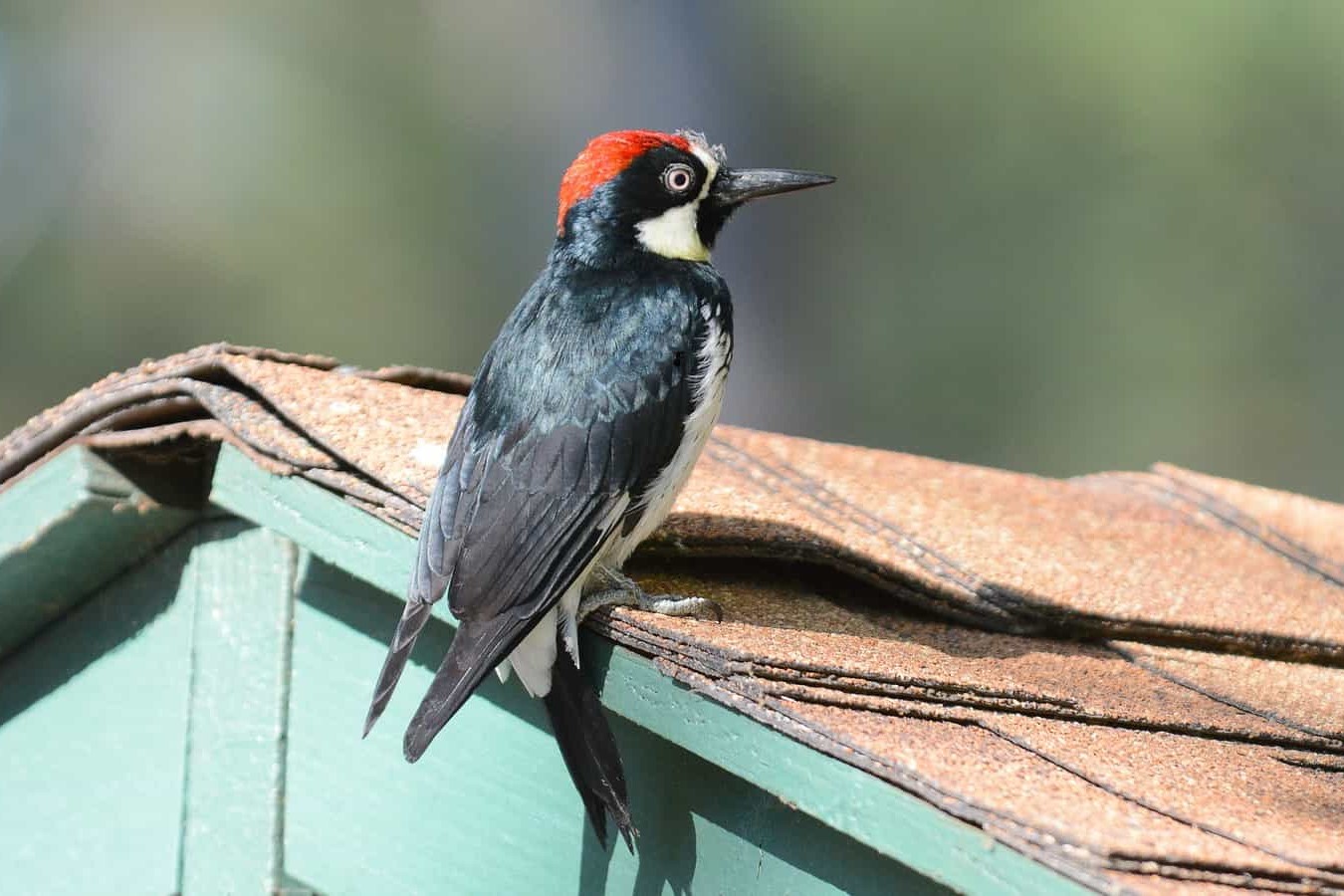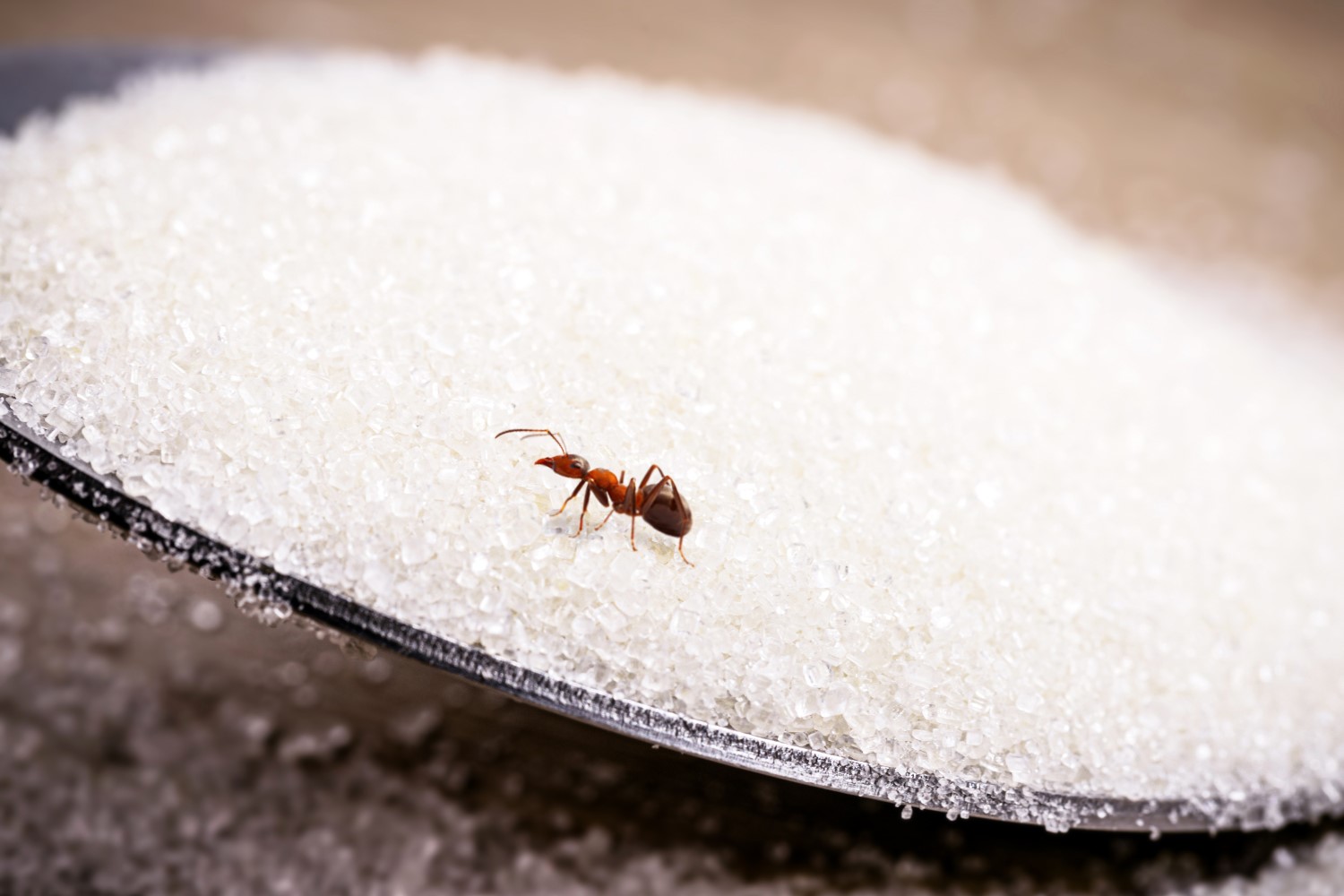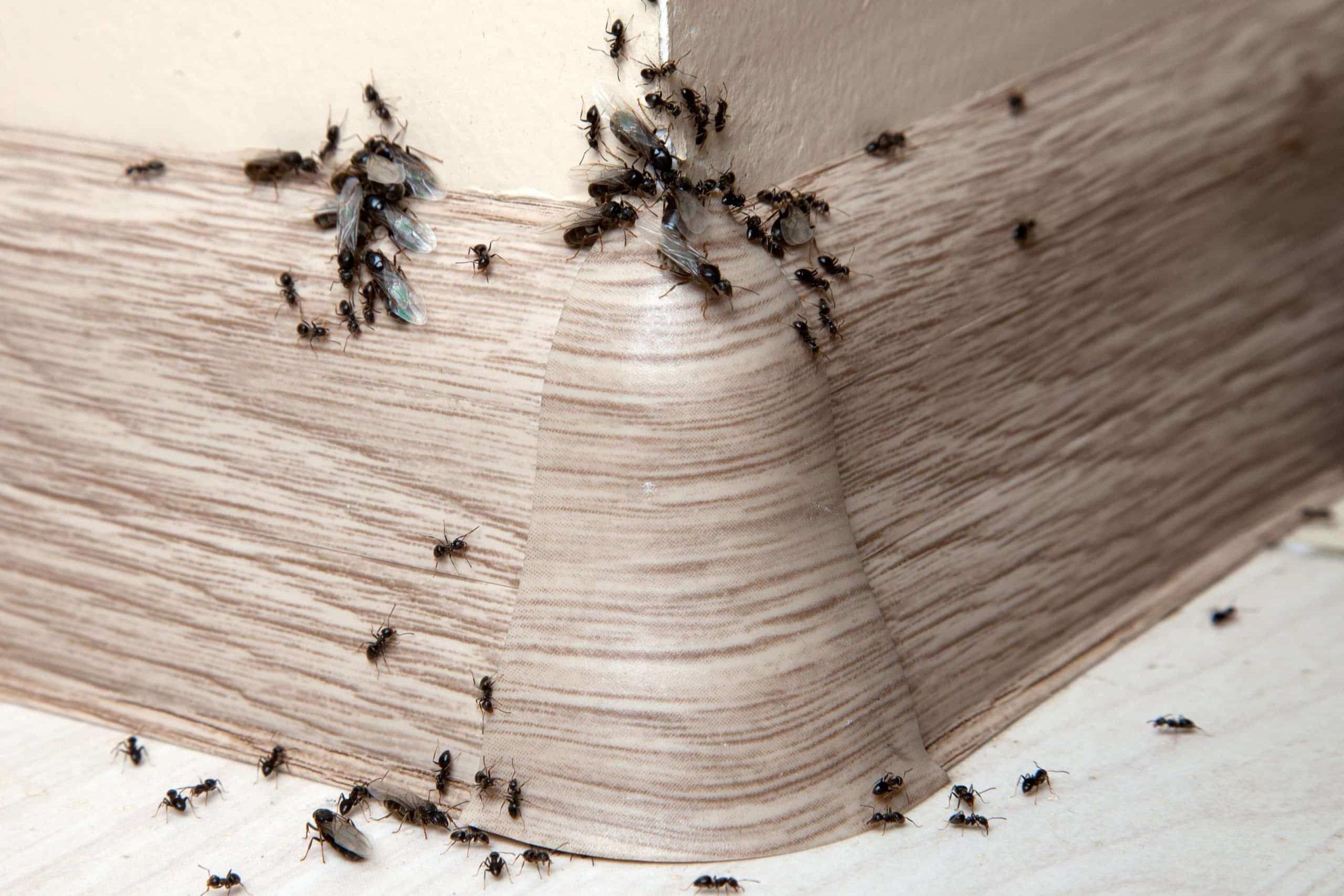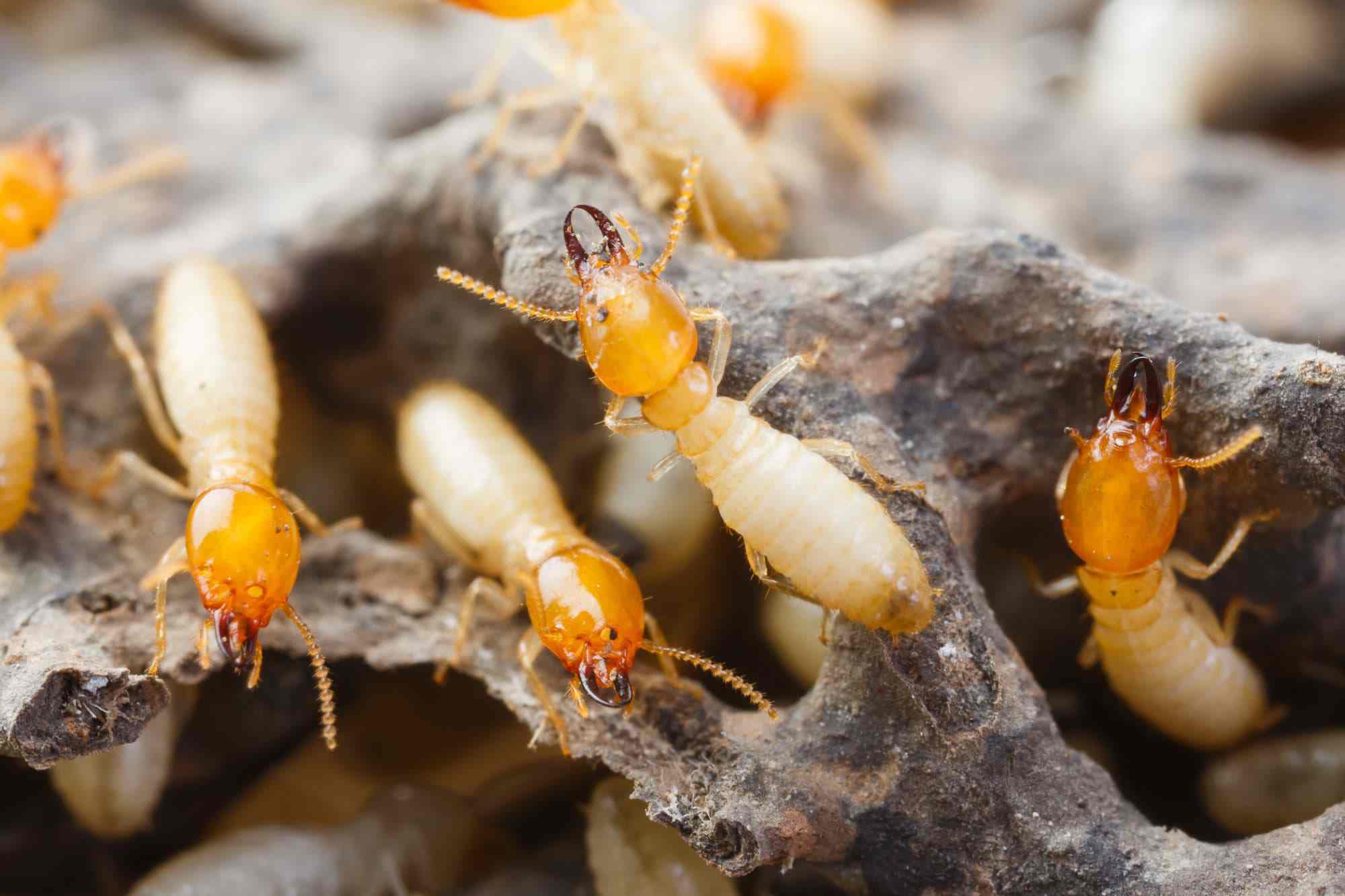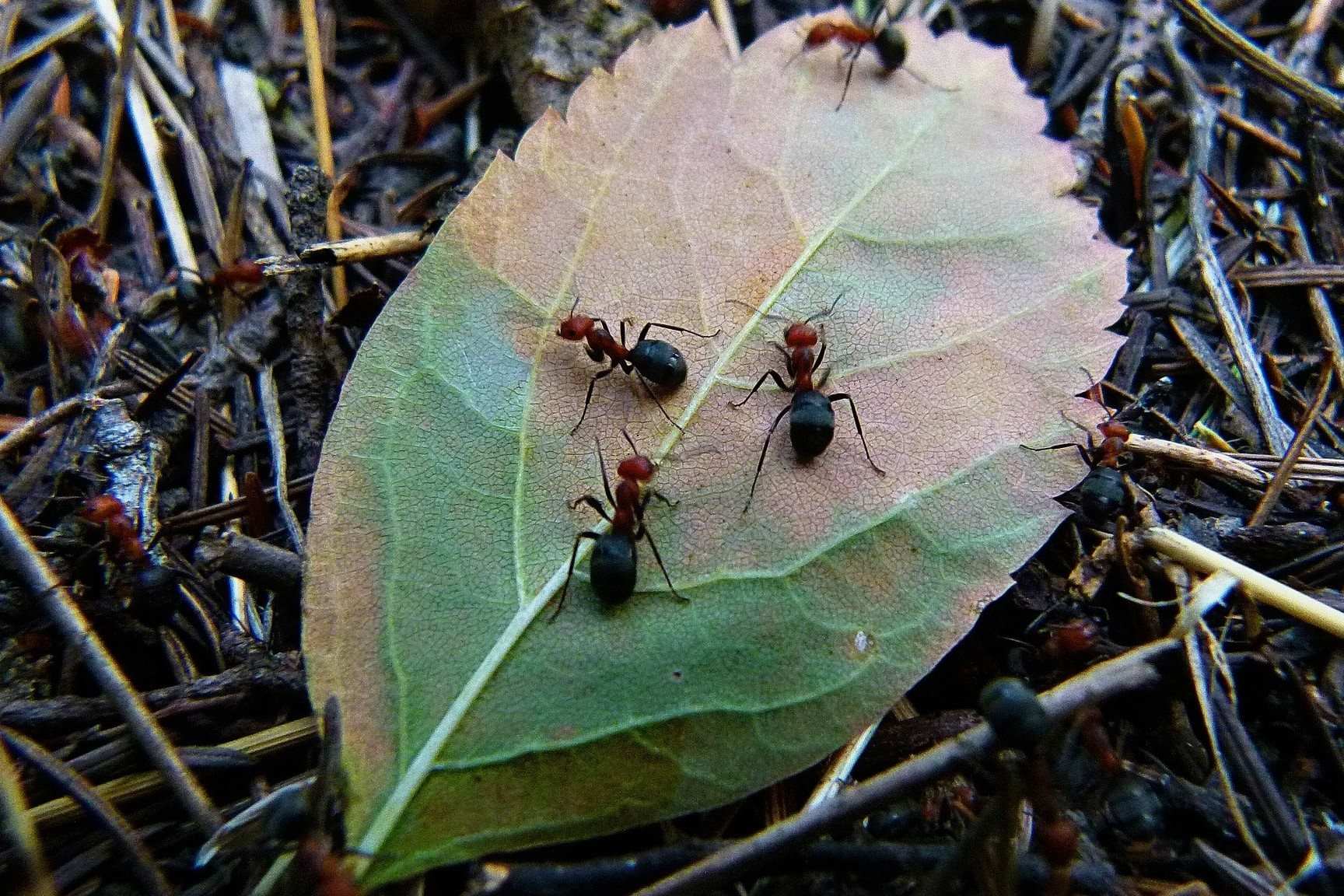Home>Home and Garden>Termites Or Carpenter Ants? How To Spot The Culprit Behind Your Home’s Damage


Home and Garden
Termites Or Carpenter Ants? How To Spot The Culprit Behind Your Home’s Damage
Published: February 20, 2024
Learn how to distinguish between termites and carpenter ants to identify the cause of damage in your home. Get expert tips on home and garden care.
(Many of the links in this article redirect to a specific reviewed product. Your purchase of these products through affiliate links helps to generate commission for Noodls.com, at no extra cost. Learn more)
Table of Contents
Introduction
Your home is your sanctuary, a place where cherished memories are made and treasured moments unfold. However, lurking beneath the surface, there are silent destroyers that can wreak havoc on its structural integrity. Termites and carpenter ants are two common pests that can cause significant damage to homes, often unnoticed until it's too late. Understanding the telltale signs of these intruders and knowing how to address them is crucial for the well-being of your home.
Termites are notorious for their insidious nature, silently feasting on wood, causing extensive damage before their presence is detected. On the other hand, carpenter ants, though less destructive than termites, can still wreak havoc by excavating wood to build their nests. Distinguishing between these two pests is essential in determining the most effective course of action to safeguard your home.
In this comprehensive guide, we will delve into the world of termites and carpenter ants, equipping you with the knowledge to identify their presence and mitigate the damage they can cause. By learning to recognize the subtle signs of infestation and understanding the treatment and prevention options available, you can take proactive measures to protect your home from these destructive invaders.
Join us as we embark on a journey to uncover the secrets of these elusive pests, empowering you to safeguard your home and preserve its structural integrity for years to come.
Understanding Termites
Termites, often referred to as "silent destroyers," are notorious for their ability to wreak havoc on homes without leaving obvious signs of their presence. These elusive pests belong to the insect order Isoptera and are categorized into various species, with subterranean, drywood, and dampwood termites being the most prevalent in infesting homes.
Social Structure
Termites are highly organized insects that live in colonies, comprising different castes such as workers, soldiers, and reproductive individuals. The workers are responsible for foraging for food, constructing tunnels, and caring for the young. Soldiers, equipped with powerful mandibles or chemical defenses, protect the colony from predators. The reproductive members, also known as swarmers, are responsible for establishing new colonies.
Feeding Habits
Termites are voracious feeders, primarily subsisting on cellulose, an organic compound found in wood and plant materials. Their ability to digest cellulose is attributed to the presence of symbiotic microorganisms in their digestive system, enabling them to break down this complex compound into simpler forms.
Infestation Signs
Detecting termite infestations can be challenging, as these pests often remain hidden within walls, floors, and other wooden structures. However, there are subtle indicators that may signal their presence, such as discarded wings near windowsills, mud tubes along the foundation, hollow-sounding wood, and small holes in drywall.
Damage Potential
The damage caused by termites can be extensive and costly to repair. As they feed on wood from the inside out, their presence often goes unnoticed until significant structural damage has occurred. This can compromise the integrity of the home, leading to safety concerns and decreased property value.
Environmental Impact
While termites are a menace to homes, they play a vital role in the ecosystem by aiding in the decomposition of dead and decaying wood. In forests and natural habitats, termites contribute to nutrient recycling and soil enrichment, playing a crucial role in maintaining ecological balance.
Understanding the behavior and characteristics of termites is essential for early detection and effective management of infestations. By familiarizing yourself with the subtle signs of their presence, you can take proactive measures to protect your home from the detrimental effects of these silent invaders.
Identifying Carpenter Ants
Carpenter ants, often mistaken for termites due to their wood-damaging habits, are distinct in their appearance and behavior. These large ants, typically black in color, vary in size, with the queen being the largest and workers and males smaller in comparison. Unlike termites, carpenter ants have a narrow waist and elbowed (bent) antennae, which are noticeable characteristics when identifying them.
One of the key indicators of a carpenter ant infestation is the presence of frass, which consists of wood shavings, debris, and insect parts. This material is often found near nest sites, indicating the ants' activity. Additionally, the sound of rustling or faint tapping within walls may suggest the presence of carpenter ants excavating wood to create galleries for their nests.
Carpenter ants are also known for their foraging behavior, often seen in the early evening or at night, as they seek food sources. Following their trails can lead to the discovery of their nest, typically located in moist or decaying wood. Unlike termites, carpenter ants do not consume wood for sustenance but rather hollow it out to establish their nests, making the wood structurally unsound over time.
Another distinguishing feature of carpenter ants is their swarming behavior. During the spring, mature colonies release winged reproductive ants, known as swarmers, to establish new colonies. These swarms are a clear indication of a well-established carpenter ant infestation and should prompt immediate action to address the issue.
By familiarizing yourself with the physical attributes, behaviors, and indicators of carpenter ant activity, you can effectively differentiate them from termites and take appropriate measures to address the infestation. Early detection and intervention are crucial in mitigating the damage caused by these wood-destroying pests, preserving the structural integrity of your home for years to come.
Signs of Damage
Detecting the signs of damage caused by termites and carpenter ants is crucial for early intervention and effective pest management. Both of these wood-destroying pests can wreak havoc on the structural integrity of your home, leading to costly repairs and safety concerns if left unchecked. By familiarizing yourself with the subtle indicators of their presence, you can take proactive measures to safeguard your home from their detrimental effects.
Read more: How To Get Rid Of Ants In Your Car
Termites:
- Hollow-Sounding Wood: One of the most common signs of termite damage is the hollow sound produced when tapping or knocking on infested wood. As termites consume wood from the inside out, the outer surface may appear intact while the interior is hollowed, resulting in a distinct sound when inspected.
- Discarded Wings: After swarming, reproductive termites shed their wings, leaving behind a pile of discarded wings near windowsills, doorways, or other entry points. These wings are a clear indication of a termite presence and should prompt immediate investigation.
- Mud Tubes: Subterranean termites construct mud tubes along the foundation of homes to provide moisture and protection as they forage for food. These pencil-sized tubes are a telltale sign of termite activity and should be promptly addressed.
- Small Holes in Drywall: Termites may create small holes in drywall as they tunnel through it in search of cellulose-rich materials. These tiny openings, often accompanied by frass (termite excrement), indicate an active infestation.
Carpenter Ants:
- Frass Deposits: Carpenter ants excavate wood to create galleries for their nests, resulting in the accumulation of frass, a mixture of wood shavings, debris, and insect parts. The presence of frass near nest sites is a clear indicator of carpenter ant activity.
- Audible Sounds: The sound of rustling or faint tapping within walls may suggest the presence of carpenter ants as they hollow out wood to establish their nests. This auditory indicator can help in identifying the location of the infestation.
- Foraging Trails: Carpenter ants are known for their foraging behavior, often seen in the early evening or at night as they seek food sources. Following their trails can lead to the discovery of their nest, typically located in moist or decaying wood.
By being vigilant for these signs of damage, you can promptly address any infestations and minimize the potential harm caused by termites and carpenter ants. Early detection and intervention are essential in preserving the structural integrity of your home and protecting it from the destructive impact of these wood-destroying pests.
Inspecting Your Home
Inspecting your home for signs of termite or carpenter ant infestations is a crucial step in safeguarding its structural integrity. By conducting thorough inspections, you can detect early indicators of pest activity and take proactive measures to address any infestations before they escalate into significant damage. Here's a detailed guide on how to inspect your home for signs of these wood-destroying pests:
Exterior Inspection:
-
Foundation and Exterior Walls: Begin by examining the foundation and exterior walls for mud tubes, which are indicative of subterranean termite activity. Look for cracks or gaps in the foundation that may serve as entry points for pests.
-
Wooden Structures: Inspect wooden decks, fences, and other outdoor structures for signs of damage, such as hollow-sounding wood or frass deposits. Pay attention to any areas where wood comes into contact with the soil, as they are particularly vulnerable to termite infestations.
-
Landscaping: Evaluate the landscaping around your home, focusing on mulch, woodpiles, and tree stumps. These organic materials can attract termites and provide a conducive environment for infestations.
Interior Inspection:
-
Attic and Crawl Spaces: Check the attic and crawl spaces for any signs of pest activity, including discarded wings, frass, or mud tubes. Inspect wooden beams and supports for hollowing or damage caused by termites or carpenter ants.
-
Basement and Foundation: Examine the basement and foundation for moisture issues, as damp environments are attractive to termites. Look for mud tubes, wood damage, or frass deposits in these areas.
-
Interior Woodwork: Inspect wooden furniture, door frames, and baseboards for any indications of pest activity. Tap on wooden surfaces to listen for hollow sounds, which may suggest termite damage.
Professional Inspection:
Consider enlisting the services of a professional pest control expert for a comprehensive inspection. Experienced professionals can utilize specialized tools and techniques to detect hidden infestations and provide tailored recommendations for treatment and prevention.
By conducting regular inspections and remaining vigilant for signs of termite or carpenter ant activity, you can effectively protect your home from the damaging effects of these pests. Early detection and intervention are key in preserving the structural integrity of your home and ensuring a pest-free living environment for you and your family.
Treatment Options
Addressing termite and carpenter ant infestations requires prompt and effective treatment to mitigate the damage and prevent further destruction to your home. Several treatment options are available, each tailored to the specific characteristics of the infestation and the structural integrity of the affected areas.
Termite Treatment Options:
-
Chemical Treatments: Professional pest control companies often utilize liquid termiticides to create a protective barrier around the perimeter of the home. This method effectively repels and eliminates termites, safeguarding the property from further infestations.
-
Termite Baiting Systems: Termite bait stations, strategically placed around the home, contain cellulose material laced with slow-acting toxins. Termites feed on the bait and carry the toxic substance back to the colony, effectively eradicating the entire population.
-
Wood Treatment: Infested wooden structures can be treated with wood preservatives or borate-based products to eliminate termites and prevent future infestations. This method is particularly effective for localized infestations and can protect vulnerable wood from further damage.
-
Fumigation: In cases of severe infestations, fumigation may be necessary to eliminate termites from the entire structure. This method involves sealing the home and introducing a fumigant to eradicate termites present in the infested areas.
Carpenter Ant Treatment Options:
-
Localized Treatments: For smaller carpenter ant infestations, targeted insecticide applications can effectively eliminate the pests. This approach focuses on treating specific areas where carpenter ant activity is observed, such as nest sites and foraging trails.
-
Dust Insecticides: Dust formulations of insecticides can be applied to voids and cavities where carpenter ants nest, effectively reaching the heart of the infestation and eradicating the pests.
-
Moisture Control: Addressing moisture issues in and around the home is crucial for preventing carpenter ant infestations. By reducing moisture levels, particularly in areas prone to dampness, you can create an environment less conducive to carpenter ant activity.
-
Professional Intervention: Seeking the expertise of pest control professionals is recommended for extensive carpenter ant infestations. Experienced technicians can assess the extent of the infestation and implement targeted treatments to eradicate the pests effectively.
When considering treatment options, it is essential to consult with licensed pest control professionals to determine the most suitable approach for your specific infestation. By addressing termite and carpenter ant infestations with the appropriate treatments, you can safeguard your home from further damage and ensure a pest-free living environment for years to come.
Prevention Tips
Preventing termite and carpenter ant infestations is essential for safeguarding the structural integrity of your home and maintaining a pest-free living environment. By implementing proactive measures and adopting preventive strategies, you can significantly reduce the risk of infestations and minimize the potential damage caused by these wood-destroying pests.
Moisture Management
Addressing moisture issues is crucial in deterring both termites and carpenter ants, as these pests are attracted to damp environments. Ensure proper ventilation in attics, basements, and crawl spaces to reduce humidity levels. Repair leaking pipes, faucets, and gutters promptly to prevent water accumulation, and consider using dehumidifiers in areas prone to moisture buildup.
Wood Maintenance
Regularly inspect and maintain wooden structures, including decks, fences, and outdoor furniture. Seal any cracks or crevices in wooden surfaces to prevent moisture ingress, and apply wood preservatives or sealants to protect against termite and carpenter ant infestations. Additionally, elevate firewood and lumber off the ground and store it away from the home's foundation to minimize the risk of pest attraction.
Landscaping Practices
When landscaping around your home, opt for plants and mulch that are less attractive to pests. Create a barrier between landscaping materials and the home's foundation to deter termites from gaining easy access. Remove decaying tree stumps, roots, and other organic debris from the vicinity of your home, as these can serve as potential nesting sites for wood-destroying pests.
Regular Inspections
Conduct routine inspections of your home's exterior and interior, focusing on areas susceptible to pest activity. Look for signs of damage, such as mud tubes, frass deposits, and hollow-sounding wood, and promptly address any indications of infestations. Consider scheduling professional pest inspections annually to detect hidden pest activity and implement preventive measures.
Professional Pest Control Services
Engage the services of licensed pest control professionals to assess your home for potential vulnerabilities and implement preventive treatments. Pest control experts can provide tailored recommendations for termite and carpenter ant prevention, including the application of barrier treatments and the installation of monitoring systems to detect early signs of pest activity.
By integrating these preventive measures into your home maintenance routine, you can create an environment that is less conducive to termite and carpenter ant infestations. Proactive pest prevention not only safeguards your home from potential damage but also provides peace of mind, knowing that your living space is protected from the destructive impact of these wood-destroying pests.
Conclusion
In conclusion, safeguarding your home from the destructive impact of termites and carpenter ants requires vigilance, proactive measures, and a comprehensive understanding of these wood-destroying pests. By familiarizing yourself with the subtle signs of infestation and taking prompt action to address any indications of pest activity, you can protect your home's structural integrity and ensure a pest-free living environment for years to come.
Termites, often referred to as "silent destroyers," pose a significant threat to homes, silently feasting on wood and causing extensive damage before their presence is detected. Their ability to compromise the structural integrity of a home underscores the importance of early detection and effective treatment. By recognizing the signs of termite infestations, such as discarded wings, mud tubes, and hollow-sounding wood, homeowners can take proactive measures to mitigate the damage caused by these elusive pests.
Carpenter ants, though less destructive than termites, can still wreak havoc by excavating wood to build their nests. Distinguishing between these two pests is essential in determining the most effective course of action to safeguard your home. By identifying the physical attributes, behaviors, and indicators of carpenter ant activity, homeowners can effectively differentiate them from termites and take appropriate measures to address the infestation.
Regular inspections, both interior and exterior, are crucial in detecting early indicators of pest activity and taking proactive measures to address any infestations before they escalate into significant damage. By conducting thorough inspections and remaining vigilant for signs of termite or carpenter ant activity, homeowners can effectively protect their homes from the damaging effects of these pests.
Furthermore, implementing preventive measures, such as moisture management, wood maintenance, landscaping practices, and regular inspections, can significantly reduce the risk of infestations and minimize the potential damage caused by these wood-destroying pests. Proactive pest prevention not only safeguards homes from potential damage but also provides peace of mind, knowing that living spaces are protected from the destructive impact of termites and carpenter ants.
In essence, by integrating these preventive measures into home maintenance routines and seeking professional pest control services when necessary, homeowners can create an environment that is less conducive to termite and carpenter ant infestations. This proactive approach not only preserves the structural integrity of homes but also ensures a safe and pest-free living environment for families to enjoy for years to come.


